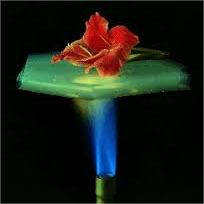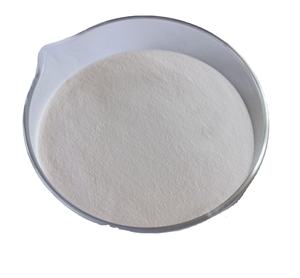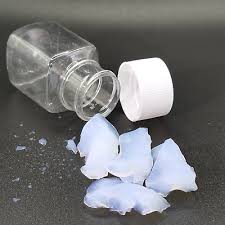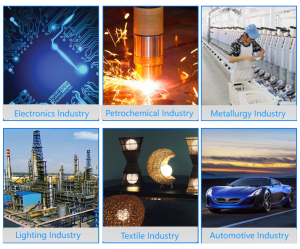Professional industry ceramic supplier, silicon nitride, silicon carbide, aluminum nitride and any other kinds of ceramics.
1. Introduction
Just 24 hours ago, a major materials science conference in Germany highlighted breakthroughs in high-efficiency melting systems using silicon carbide crucibles—underscoring their critical role in next-generation metallurgy and semiconductor manufacturing. As global demand for energy-efficient, durable industrial components rises, silicon carbide (SiC) continues to dominate the advanced ceramics landscape.
Silicon carbide crucibles are specialized containers made from one of the hardest and most thermally stable ceramic materials known. They’re essential in labs, foundries, and even kitchens—not just for holding molten metal, but also for baking dishes that can go straight from freezer to oven without cracking.
2. What Is a Silicon Carbide Crucible?
A silicon carbide crucible is a high-performance vessel engineered to withstand extreme temperatures—often exceeding 1,600°C (2,912°F)—while resisting chemical corrosion and thermal shock. Made from sintered or reaction-bonded silicon carbide (RBSiC), these crucibles offer superior strength, thermal conductivity, and longevity compared to traditional clay-graphite or alumina alternatives.
Thanks to its covalent bonding structure, silicon carbide maintains integrity under rapid heating and cooling cycles, making it ideal for melting non-ferrous metals like aluminum, copper, and zinc.
3. Key Properties That Make Silicon Carbide Stand Out
- Exceptional thermal conductivity: Heats evenly and quickly.
- High hardness (9.5 on Mohs scale): Resists wear and abrasion.
- Low thermal expansion: Minimizes cracking during temperature swings.
- Chemical inertness: Doesn’t react with most molten metals or slags.
- Oxidation resistance up to 1,600°C in air.
These traits explain why silicon carbide crucibles outperform zirconia crucibles and alumina (Al2O3) ceramics in many high-stress applications.
4. Silicon Carbide vs. Other Advanced Ceramics
When comparing boron carbide vs silicon carbide, boron carbide (B4C) is harder but more brittle and significantly more expensive—making SiC the practical choice for crucibles and structural parts. Meanwhile, silicon nitride (Si3N4) offers excellent fracture toughness and is used in components like silicon nitride rings, custom heat shields, and even silicon nitride crucibles for specialized lab use. However, silicon nitride generally has lower thermal conductivity than SiC, limiting its use in high-heat transfer scenarios.
For furnace linings or burner systems, you’ll often see silicon carbide brick, silicon carbide burner nozzles, or RBSiC silicon carbide tile blocks—each leveraging SiC’s robustness in aggressive environments.
5. Beyond the Lab: Everyday Uses of Silicon Carbide Ceramics
Surprisingly, silicon carbide isn’t just for industry. Its durability and non-toxic nature have inspired a wave of consumer-grade kitchenware. You’ll find items like:
- Silicon carbide ceramic baking dish
- Silicon carbide ceramic dinner plates (including black, white, and blue-white porcelain styles)
- Silicon carbide ceramic casserole dish with lid
- Silicon carbide ceramic salad bowl and pasta bowls
- Silicon carbide ceramic butter dish with lid
- Silicon carbide ceramic Christmas plates and serving platters
Brands like Staub now explore silicon carbide baking dish Staub lines due to their oven-to-table resilience and aesthetic appeal. Even children’s plates and handcrafted ceramic plates benefit from SiC’s chip resistance.
6. Industrial Components Made from Silicon Carbide
Beyond crucibles and dinnerware, silicon carbide forms critical parts across sectors:
- Silicon carbide ceramic tubes for high-temperature furnaces and thermocouple protection
- Silicon carbide porous ceramic tube for filtration
- Silicon carbide discs and grinding discs for precision machining
- Silicon carbide ceramic disc taps and quarter-turn valves for plumbing
- Silicon carbide ceramic columns and pillars in refractory structures
- Silicon carbide ring seals in pumps and reactors
These components thrive where metals fail—especially in corrosive or ultra-hot settings like glass manufacturing nozzles or chemical processing plants.
7. Manufacturing and Customization Trends
Advanced ceramics manufacturing now allows for highly customized silicon carbide parts—from ramekins to furnace rollers. Reaction-bonded silicon carbide (RBSiC) enables complex shapes like silicon carbide ceramic casserole or intricate piping systems. Similarly, companies specializing in silicon nitride crucible factory output are scaling production to meet semiconductor and aerospace demands.
The high purity silicon nitride powder market is also expanding, feeding into demand for machined ceramic parts with tight tolerances.
8. Conclusion
From melting aluminum in a foundry to serving pie on a holiday table, the silicon carbide crucible exemplifies how advanced ceramics bridge industrial might and daily life. With unmatched thermal performance, chemical stability, and growing versatility in form—from bricks to butter dishes—silicon carbide remains a cornerstone of modern materials engineering. Whether you’re comparing boron carbide vs silicon carbide or shopping for silicon carbide ceramic dinnerware, one thing is clear: SiC is here to stay.
Our Website founded on October 17, 2012, is a high-tech enterprise committed to the research and development, production, processing, sales and technical services of ceramic relative materials such as Understand. Our products includes but not limited to Boron Carbide Ceramic Products, Boron Nitride Ceramic Products, Silicon Carbide Ceramic Products, Silicon Nitride Ceramic Products, Zirconium Dioxide Ceramic Products, etc. If you are interested, please feel free to contact us.





